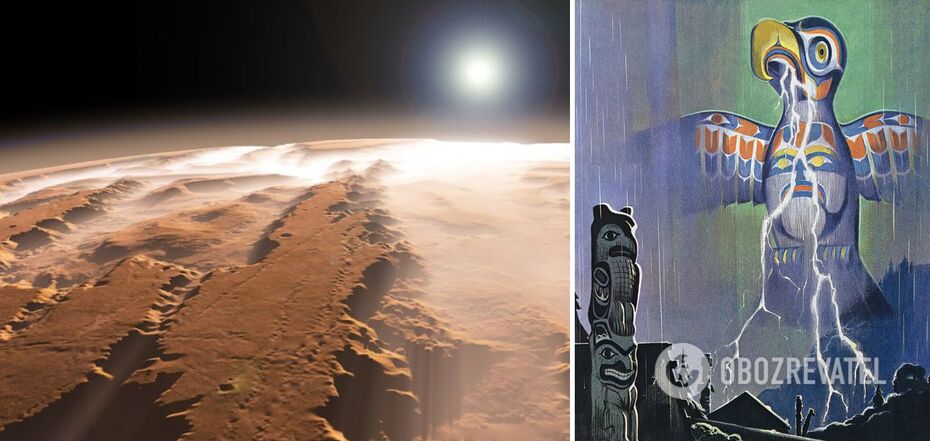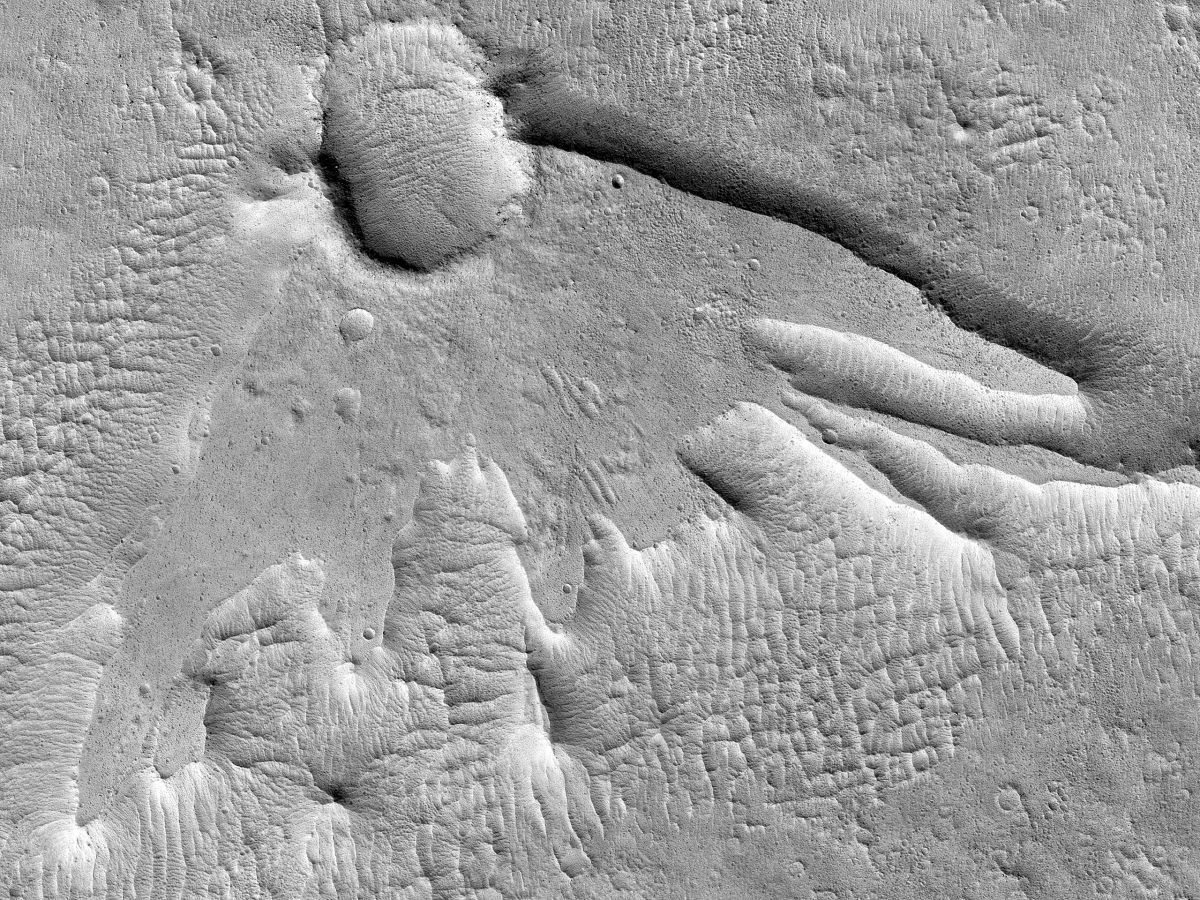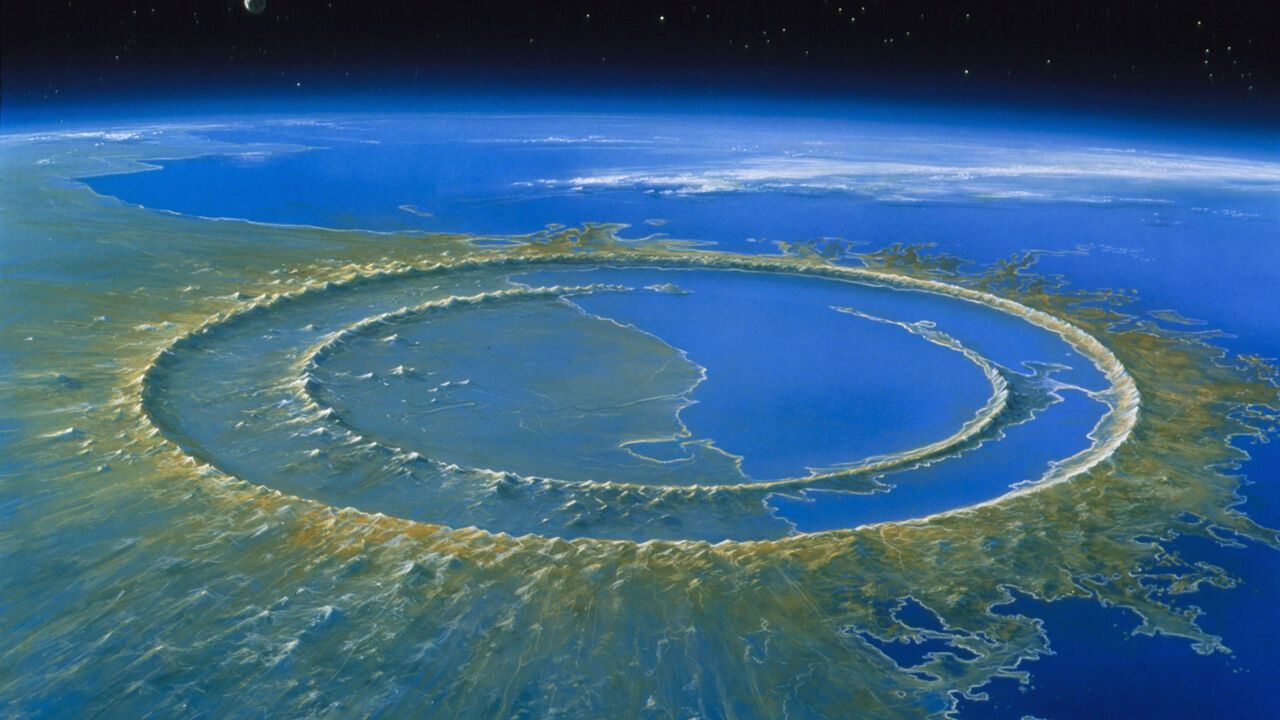News
The "footprint" of giant mythological bird discovered on Mars: how it formed
NASA's Mars Reconnaissance Orbiter spacecraft has photographed an amazing crater on Mars that looks very much like the giant footprint of the mythological Thunderbird, which was sung in the mythology of the indigenous peoples of the Americas and many cultures of the Pacific coast. The amazing shape of the crater is due to the fact that the asteroid or comet that left it crashed into the red planet at an angle.
According to Universe Today, impact craters are traces of a chaotic period in the history of our solar system. These "greetings" from the past can be seen both on Earth and on our planet's satellite, the Moon, even with the naked eye. There are similar traces on Mars, but to study them, you need not even a telescope but an orbiting spacecraft with a powerful camera.
It was such a device - the Mars Reconnaissance Orbiter - that was able to take high quality photos of an unusual Martian crater, thanks to the HiRISE camera.
The crater was formed as a result of a space body hitting the planet. The collision occurred at an acute angle, so the crater was formed in its strange shape, not the traditional round one.
The researchers note that most of the debris from this collision has accumulated on the elevated plateau at the top of the image. The rest of the debris was scattered, forming a pattern reminiscent of the Thunderbird.
This unnamed crater is about 5 km across and is one of hundreds of thousands of craters of this size. It is located near the much larger Schiaparelli crater, as well as the huge Planitia Plain impact basin.
The Mars Reconnaissance Orbiter has been studying the planet since 2006. During this time, the spacecraft has managed to document many craters with various intriguing features. There are craters filled with dunes, craters formed by ice sublimation, and even double craters.
Such a variety of craters is related to where the red planet is located. Mars is located near the asteroid belt, so in its time it was hit by a wide variety of space objects at different angles and speeds.
Nowadays, large asteroids capable of creating huge craters on planets have already run out in our solar system. And those that remain are no longer so terrible for the planets, although they can still pose a certain threat.
As noted, the mere fact of an oblique collision does not mean that a crater in the shape of the Thunderbird or something similar will be formed because oblique collisions can form various crater shapes.
The most famous impact crater formed as a result of an oblique collision, according to scientists, is located on Earth. Researchers are almost certain that the Chicxulub crater, which resulted from the fall of a 10-kilometer asteroid that led to the extinction of dinosaurs, was formed by a low-angle impact.
Scientists even believe that if the angle of the impact had been different, its effects would have been different, too.
"A steeply inclined impact results in a nearly symmetrical distribution of ejected rock and releases more climate-changing gases per mass of impactor than a very shallow or nearly vertical impact," the scientists wrote in a 2020 article.
Subscribe to OBOZREVATEL's Telegram, Viber, and Threads channels to keep up with the latest developments.






























